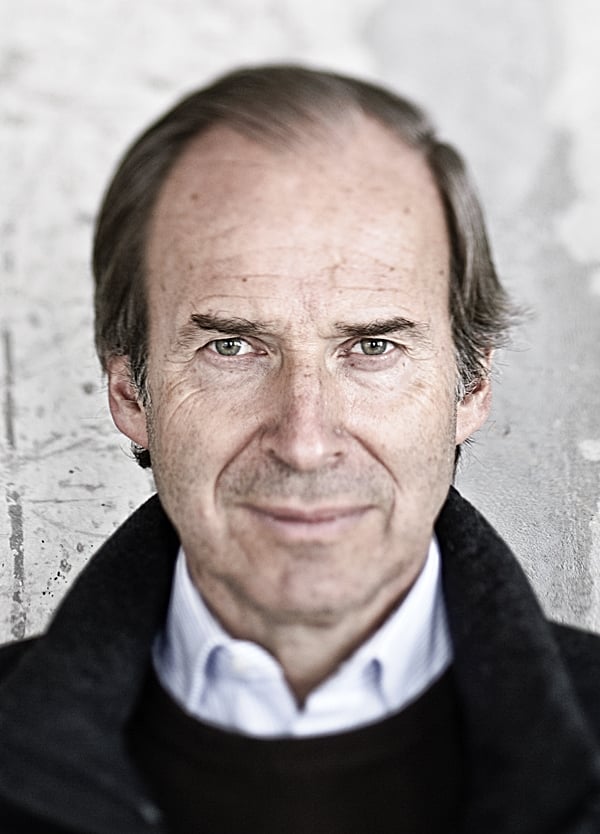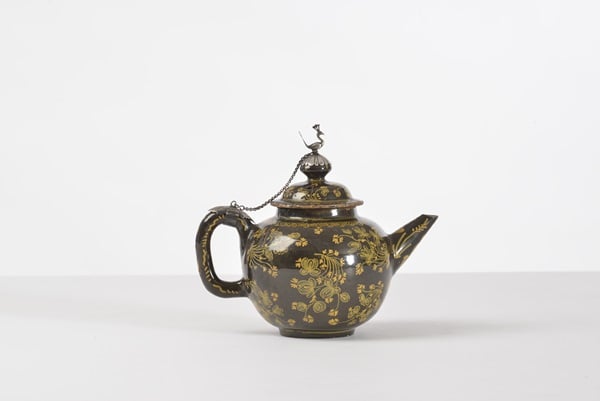Art Fairs
Simon de Pury on Why TEFAF Really Matters and the Future of the Art World
Simon de Pury explains the changing tastes that shape the future of this fair.

Simon de Pury explains the changing tastes that shape the future of this fair.

by
Artnet News


A rare brown-glazed Delft spherical teapot and cover with silver mount (1700–10). Marked LVD for Lieve Van Dalen The Young Moor’s Head Factory from 1695–1715 .
Photo: Courtesy Aronson Antiquairs, Amsterdam
Simon de Pury is a leading figure in the global art market. From 2000 to 2012, de Pury was chairman and chief auctioneer of Phillips de Pury & Company, a leading global auction house for contemporary art, design, and photography. A spirited and highly successful career at Sotheby’s preceded this chapter. Earlier in his career he was also curator of the Thyssen-Bornemisza Collection that today is housed in its own museum in Madrid.
Currently de Pury is chairman of de Pury & de Pury, a company specializing in private treaty sales and advising major private collections on Impressionist, modern, postwar, and contemporary art. He is also an active charity auctioneer, raising hundreds of millions of dollars for the benefit of cultural, philanthropic, and medical institutions (see Billionaire Buys $1 Million Picasso Sketch at Leonardo DiCaprio Gala).
In his spare time, de Pury is a DJ and a photographer who has exhibited his work in Geneva (Art & Public), Berlin (The Corner), Paris (Colette), and Moscow (MAMM, Multimedia Art Museum Moscow). We spoke with him about his experiences at TEFAF and what’s ahead for the fair.
How many times have you attended TEFAF? What is the pleasure of attending?
I have tried to visit TEFAF most years. With the exception of the Biennale des Antiquaires in Paris, it was for a very long time the only fair where you could see the best in every imaginable category, from Old Masters to contemporary art and from works of art to jewelry. As someone who is interested in all these areas, it presents a welcome variation to the fairs that only show 20th- and 21st-century art.
Have you ever had an unusual experience at TEFAF? What was it?
In the same way that TEFAF covers all areas, it also attracts the many very different microcosms that make up the collectors in these fields. This is also a welcome change, since the market for modern, postwar, and contemporary art has become a traveling circus that sets up its tent in a different place every week, if not every day. The only thing that doesn’t change is the public; you meet the usual suspect everywhere. In Maastricht you can make more surprising chance encounters that in themselves can be unusual experiences.
TEFAF is known for its authoritative vetting process. Its website describes how 175 international experts in 29 different categories examine every work of art for quality, authenticity and condition. What are some of your thoughts about this practice?
The more vetting, the better. With a constant renewal of the collector base, trust and confidence are absolutely essential. A serious and thorough process clearly contributes towards it.
The fair beautifully displays Old Master paintings and contemporary pieces. What should fairgoers be on the lookout for at this year’s edition?
It is the dialogue between objects and unexpected juxtapositions that create excitement. Axel Vervoordt was a pioneer in this and can be credited for more and more contemporary art collectors wanting to create a stimulating mix as opposed to living in a stereotype environment which is limited to one period. It is that mix that has become contemporary.
The annual TEFAF Art Market Report by Dr. Clare McAndrew [the 2014 edition is here] provides sound information about international trade and new markets. Do you yourself have a prediction for 2015?
We have witnessed a nearly unprecedented growth in most areas of the art market over the last few years. With the affluent getting more and more affluent and with only a limited supply of great art being available, one could be inclined to think that the good days should continue. While taste continuously evolves over time, the overall art market has mostly only grown and expanded since the mid-19th century. At the same time we know that every now and then, completely unforeseen circumstances can occur that temporarily halt or slow down things.
Simon de Pury tweets and Instagrams from @simondepury.
For more artnet News coverage about TEFAF 2015, see TEFAF to welcome new CEO Patrick van Maris, What Does Hervé Aaron Predict for TEFAF 2015?, and What Are Top Dealers Bringing to TEFAF Maastricht? Want to see more about what the fair has to offer? Go to www.artnet.com/tefaf.